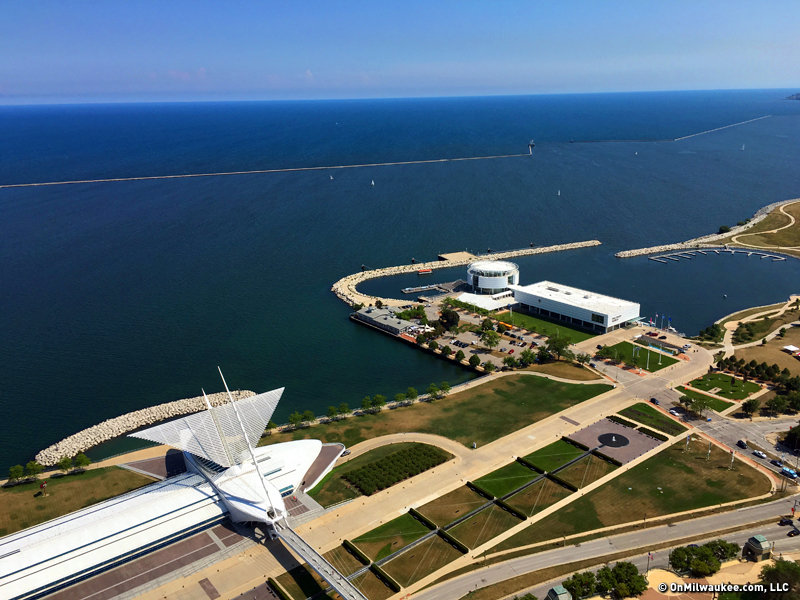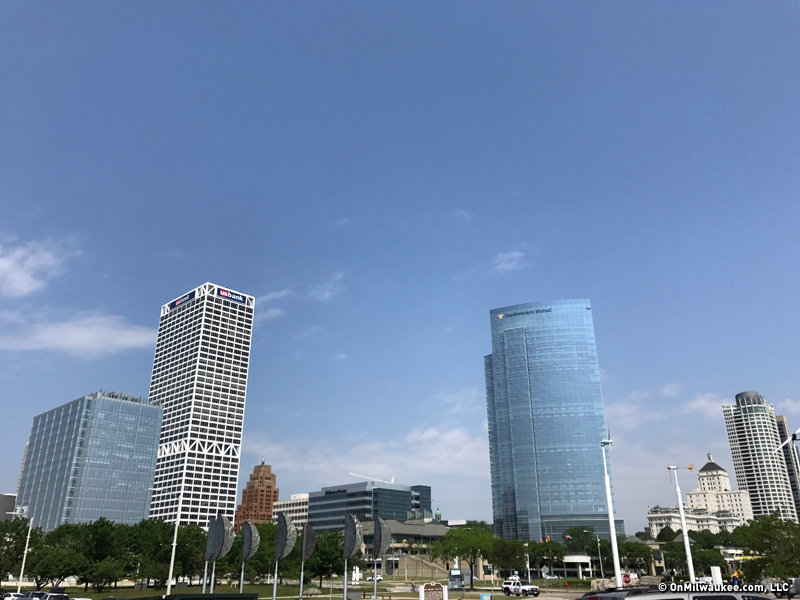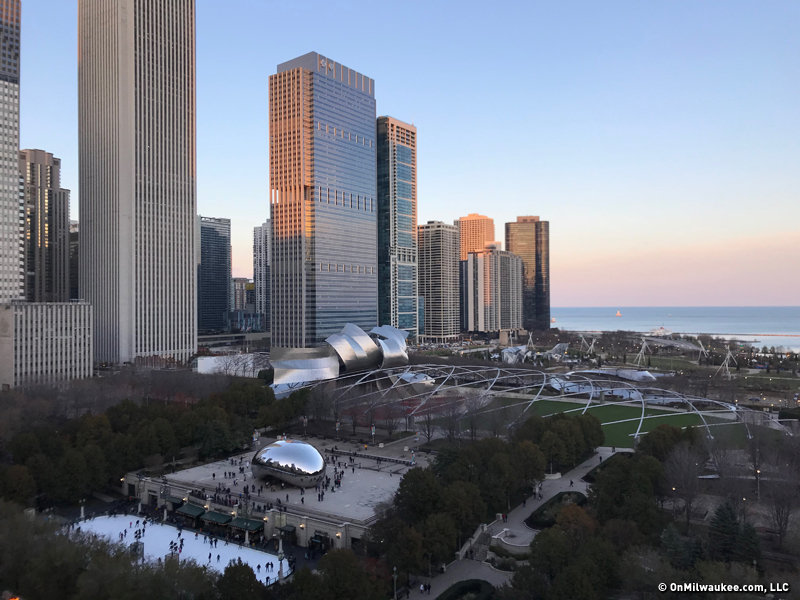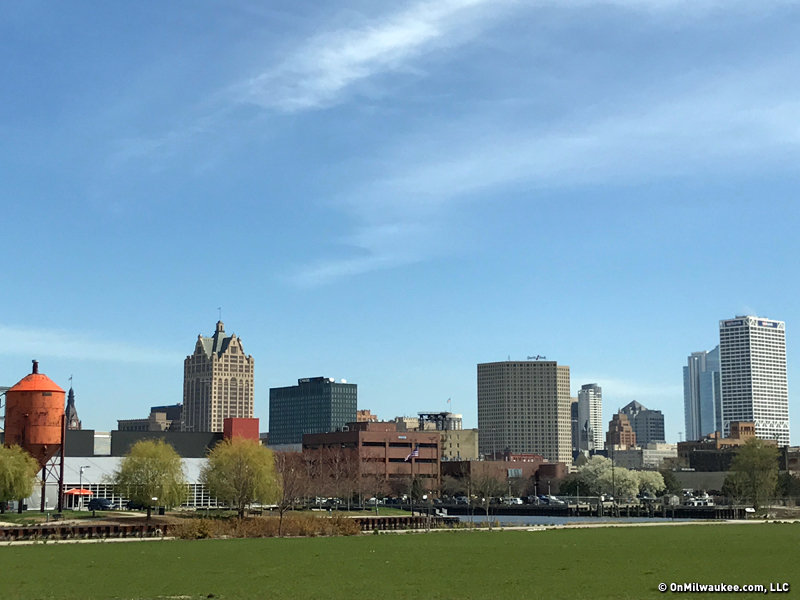Face it, we all have things we love and hate about Milwaukee. But, complaining and focusing on the negative leads nowhere. So, in this column we highlight an issue that we think needs to be addressed, discussed and solved. Every "This Sucks" feature tells you why we think something sucks, offers commentary, opinions, solutions and, of course, gives you the chance to weigh in through our exclusive talkback feature.
What sucks: As anyone who has traveled outside the U.S. knows, it's darn near impossible to find a place in the Western world that doesn't accommodate travelers who speak diverse languages. Other than the U.S., that is.
Invite a francophone friend or an Italian-speaking cousin for a visit to Milwaukee and you'll soon realize things aren't much better here. If you're planning on sending them out on the town alone, better provide a phrase book and your cell number.
"It's critical," says Dean Amhaus, president of Spirit of Milwaukee, "in other cities around the world, it's multilingual. We are having some serious discussion about this. If we want to align ourselves to places like Chicago and see them as allies and not as competition, we need to promote tourism. And those people may be coming from places that speak other languages."
Ellen Winters, executive director of the Westown Association -- whose district includes the Midwest Airlines convention center, the Hilton and the Milwaukee Public Museum -- agrees, but says that cost is definitely a factor. "I think the city's museums would benefit from having brochures written in more than one language," she says. "I know that Chicago, New York and San Francisco offer a brochure in English and then the same brochure in Spanish, German or French. The issue to consider, however, is that the cost of a double/triple or quadruple printing of a single brochure can be cost inhibiting."
Why it sucks: It's not an issue of an "official language" for Americans. Just as Amsterdam welcomes English-speaking visitors with English signage, so should American cities that want to become tourist destinations welcome their guests.
"It's sort of a statement on Americans as a whole that Americans need to become in tune with the rest of the world," Amhaus says. "We have to learn their cultures and languages as well, not just the other way around."
In bigger cities like New York and Chicago, most tourism offices and destinations like art museums offer brochures in a variety of languages. But in Milwaukee your non-English-speaking friend from Germany will have to rely on pictograms to find the bathroom.
While Visit Milwaukee will open a new visitors center in the Pier Milwaukee complex on June 10 featuring touch screens and an array of printed materials for tourists, public relations manager Jeannine Sherman says all of it will be in English, for now.
"All our visitor information is printed in English," she says via e-mail. "While the bulk of the touch screens will be in English, we would like to include a welcome page that can be translated into different languages by touching a portion of the screen. This area would provide visitors with general information on Milwaukee. Our marketing technology manager is gathering research on other organizations that have done so to see what format would work best for us and our visitors."
The Milwaukee Art Museum, on the other hand, has already taken some steps toward multilingualism, according to Katie Heldstab, MAM's media relations coordinator.
MAM offered French audio guides and Web pages for its exhibition of Degas sculptures, Polish tours of the "Leonardo Da Vinci and the Splendors of Poland" show and Spanish tours -- led by high school and college students -- of the Graciela Iturbide exhibition. Docent-led tours are also conducted in French, Spanish and German, Heldstab points out.
"For the most part bilingual tours are done on a per exhibition basis, where it makes sense. However, becoming more accessible to a more diverse population is something that is important to us and that we are pursuing in our plans for the future."
Carrie Michael, communications specialist at the Milwaukee Public Museum, notes that signage and printed materials for its recent chocolate and Vatican exhibits were in English and Spanish. Multilingualism, she says, is on the museum's radar.
"We have a new VP of Marketing and Communications, Lisa Berman, who is bringing about many new programs and initiatives," Michael says. "I know multilingual materials are one of many initiatives being looked at."
Not surprisingly, change comes slowly and Amhaus says it's been hard even to simply welcome guests in their own languages.
"It was something that was discussed when they were redoing the airport," he recalls. "When we were approached about using the Milwaukee logo in the concourses, one of the thoughts we had was incorporating (the phrase) 'Welcome to Milwaukee' in other languages, as well."
When it came time to choose the languages, however, things got complicated and, Amhaus says, the variety of choices was wide-ranging and mind-boggling. The idea then fell apart.
"People from overseas probably perceive not just Milwaukee, but all of the U.S. as not as internationally conscious," Amhaus admits. "In other countries, there is such an exchange of people, they are getting Americans, French, Germans, Japanese coming in and are experiencing it more."
Sherman says that Visit Milwaukee will consider adding languages as the demand arises.
"We will certainly address the need to print our publications in languages other than English as that market develops," she says.
We know that Milwaukee is famous worldwide for Harley iron and sudsy Miller, but can the tourism market here develop without the linguistic infrastructure? Are a few frustrated tourists capable of generating enough bad publicity at home to keep the European cruise ships from sailing north from Chicago?
"It's essential, if we want to become an international city and I think that's what we're moving toward ... absolutely," says Amhaus. "We stake our whole summer on the festivals which are international in flavor."
And Amhaus believes things are starting to look up.
"I think it's changing. You'd better at least have it in Spanish at this point. As we've evolved, if you don't have it in Spanish, I'm amazed. You have a huge consumer base here. I think if we were to do it, it would be seen as a positive and they'd say this a city that is really in tune with the international traveler."
Winters agrees that change is coming.
"Certainly, any city can always find ways to improve communication for non-English speaking tourists. I think Milwaukee is making an effort to do so, and that is important to note. I know many of the hotel concierges speak more than one language and there is always helpful staff on hand to increase communication opportunities. I think Milwaukee is a very friendly city for tourists, International or regional."
What you can do to make it not suck: Unless you own a museum or tourist attraction, there might not be much you can do, except contact the city's main tourism groups and express your support. And, hey, why not brush up on that second language?
The Spirit of Milwaukee Web site is spiritofmilwaukee.org. The Visit Milwaukee Web site is milwaukee.org.
Born in Brooklyn, N.Y., where he lived until he was 17, Bobby received his BA-Mass Communications from UWM in 1989 and has lived in Walker's Point, Bay View, Enderis Park, South Milwaukee and on the East Side.
He has published three non-fiction books in Italy – including one about an event in Milwaukee history, which was published in the U.S. in autumn 2010. Four more books, all about Milwaukee, have been published by The History Press.
With his most recent band, The Yell Leaders, Bobby released four LPs and had a songs featured in episodes of TV's "Party of Five" and "Dawson's Creek," and films in Japan, South America and the U.S. The Yell Leaders were named the best unsigned band in their region by VH-1 as part of its Rock Across America 1998 Tour. Most recently, the band contributed tracks to a UK vinyl/CD tribute to the Redskins and collaborated on a track with Italian novelist Enrico Remmert.
He's produced three installments of the "OMCD" series of local music compilations for OnMilwaukee.com and in 2007 produced a CD of Italian music and poetry.
In 2005, he was awarded the City of Asti's (Italy) Journalism Prize for his work focusing on that area. He has also won awards from the Milwaukee Press Club.
He has be heard on 88Nine Radio Milwaukee talking about his "Urban Spelunking" series of stories, in that station's most popular podcast.







